Acer Allegro - my opinion
For a start - a brief introductory and picture.
The operating system iPhone OS was released on June 29, 2007. At the moment we have its fifth major version.
The Android operating system was released on September 23, 2008. At the moment we have its fourth major version.
The Windows Mobile operating system was released on April 19, 2000. She died February 15, 2010.
The Windows Phone 7 operating system was released on October 11, 2010.
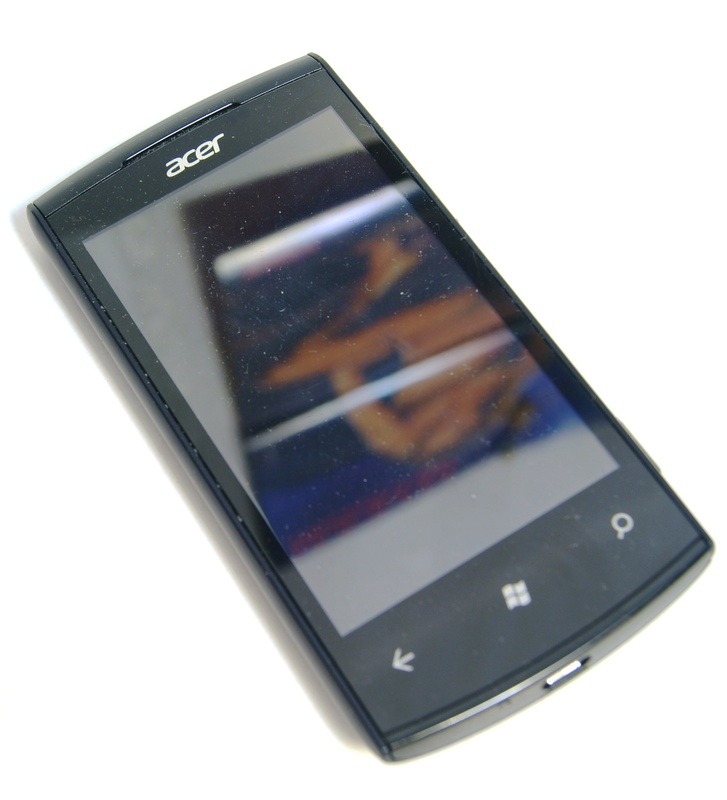
I did not accidentally separate Windows Phone from Windows Mobile. Just these two operating systems - about as VAZ 2101 and Lada Kalina. Like both from the same manufacturer, spare parts from the "penny" to the "Kalina" do not stand up. And here - Microsoft threw a trick - all old applications are in the past. All from scratch. And, it should be noted - it benefited the operating system. At the moment, WP7 has become a competitive OS that can compete with market leaders (Google Android and Apple iOS).
To aggravate (and maybe the other way around - to improve) the perception of the new OS by the Old Believers, Microsoft firmly set the framework for the iron side of the devices.
Microsoft announced the minimum requirements for devices on Windows Phone 7.
All devices must have:
- capacitive multi-touch display (recognition of at least 4 touches at the same time). With a resolution of 800x480 (WVGA).
- a processor with a frequency of at least 1 GHz;
- from 256MB of RAM and 8GB of flash memory;
- support for DirectX 10;
- GPS receiver;
- accelerometer;
- electronic compass;
- FM radio;
- a camera with a flash and a resolution of at least 5 MP.
Also, all devices must have 6 hardware buttons, namely:
1. On / Off: this button can have several applications - directly turning the device on and off, locking the device or turning the display on and off.
2. Sound Volume Control: adjust the sound volume, and, moreover, both in general and during a call.
3. Camera: this button should support half and full pressure (as in conventional digital cameras). Pressing the button halfway will adjust the focus, and pressing it fully will start shooting directly. In addition, clicking on the camera button will activate the corresponding application.
4. Back: allows you to go one step or page back in the same application or between applications. Among its other features may be closing menus, windows, and so on.
5. Start: all active applications are paused and the start page opens.
6. Search: Bing search engine to search for content on the device. Determining the current location of the user, this function, including, will allow you to perform a local search.
And it is not surprising that today's reviewed smartphone has exactly the characteristics that it has. This is both the law and the “golden” solution for the “smartphone” segment. At least in the field of working with a smartphone, and not the geek "4 cores, 12 megapixels, FullHD".
')

Size 115.8 x 59 x 12.9 mm
Weight ~ 135 g
Battery Li-Po 1300 mAh
Mobile connection 850, 900, 1800, 1900 MHz
HDSPA 14.4 / HSUPA 5.76 Mbps modem speed
Qualcomm 7230, 1 GHz processor
ROM / RAM 8 GB / 512 MB
LCD display 3.6 "WVGA, Multitouch (4 touches)
Camera 5 MP EDOF 480p @ 30fps
WiFi 802.11 b / g / n
Bluetooth Class 2.1 + EDR
GPS With A-GPS support
Micro USB 3.5mm audio jack
Sensors: Accelerometer, light sensor, proximity sensor
The smartphone lies in the hand like a glove - it is moderately compact, but the display has an optimal diagonal for its resolution. In other words - if the display were bigger (and with it a smartphone) - there would be a grain, there would be a “spade”.
The display matrix is made using TN technology - good colors and viewing angles. But this is not AMOLED and not IPS. However, it is pleasant to use it, the eye is happy, the viewing angles are good.
Reactions to touch - instant, accurate.

The touch buttons below the display are not always noticeable, it’s good that they glow bright in the dark.
Physical buttons - and this is a power button, volume buttons and a two-position camera button - all chrome-plated, shiny, thin, but comfortable. Random clicks were not.

At the top end: the power button and wake-up button, a 3.5 mm jack for headsets and headphones.
There is nothing on the left side.
On the right side - the volume rocker, two-position camera button (works even when the screen is locked).
On the bottom is a microphone hole and a micro USB connector.
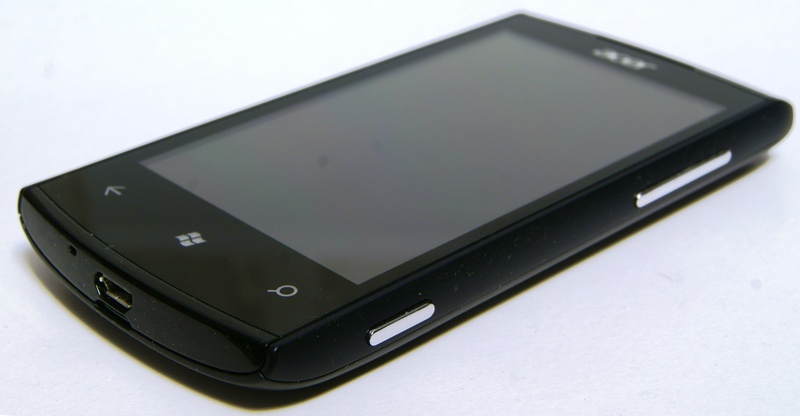
On the front side there is a 3.7 inch screen covered with glass, three touch buttons, a light sensor, a proximity sensor and a speaker (with a light indicator of events).

On the back side there is a 5 MP camera and a loud speaker grill (which plays music, melodies and is used for a speakerphone).
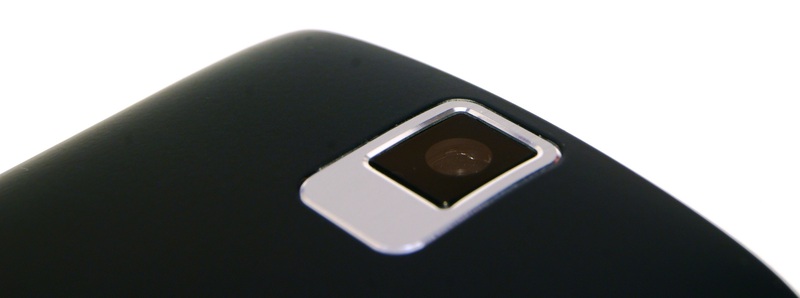
The smartphone body material can be divided into 4 elements: the back cover is soft-touch, the sides are soft-touch, the upper and lower ends are made of glossy plastic, and the display is glass.

The design of the device is quite strict, very similar to the Android solutions of the company (Liquid). The assembly is good, the lid does not creak, nothing is skewed anywhere, it does not move away.
The only thing that is unusual with a smartphone is the landing of a SIM card - it goes sideways.
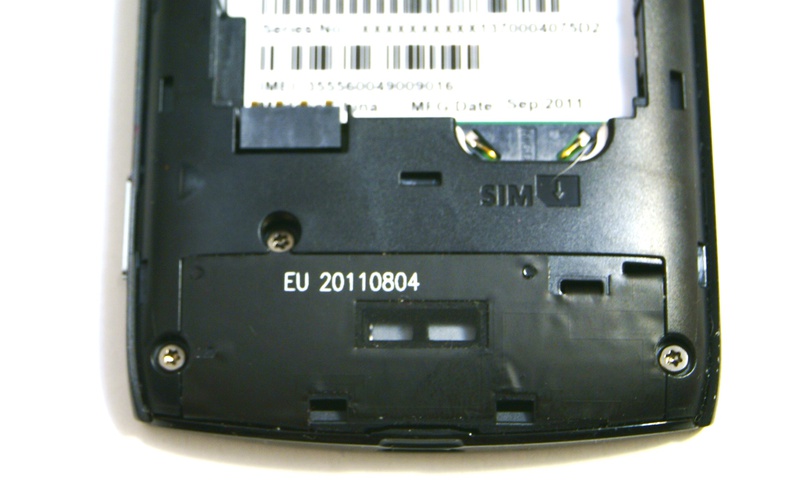
I held the battery for about two working days - I constantly use the Internet, maps, I read the tape of friends, calls for 30-45 minutes, SMS.
If you are not particularly active in using - just call for 30 minutes, sms - then it will last 3-4 days. But for a smartphone there is no point in this mode.
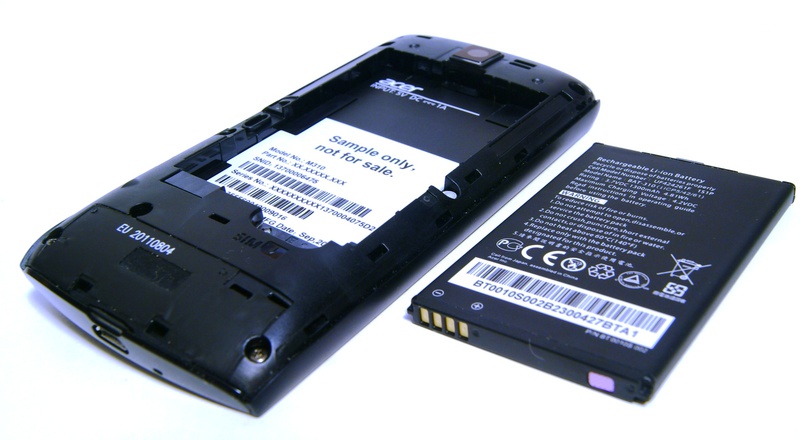
Acer Allegro creates the feeling of a serious thing - that is, in general, when dealing with Allegro, there is not a single “WOW! Not like everyone else! ”And this is good. This smartphone is an ideal workhorse for those who need a smartphone, without showing off. And everything would be fine, but the model is called Acer Allegro - translated from Italian, it means “cheerful.” In my opinion, it would be worthwhile to call it Acer Impresa - after all, a smartphone is not a business one.
By the way, this smartphone is the first device from Acer after changing the logo (it has become more strict and uniform).

Photo Gallery: here
The operating system iPhone OS was released on June 29, 2007. At the moment we have its fifth major version.
The Android operating system was released on September 23, 2008. At the moment we have its fourth major version.
The Windows Mobile operating system was released on April 19, 2000. She died February 15, 2010.
The Windows Phone 7 operating system was released on October 11, 2010.

I did not accidentally separate Windows Phone from Windows Mobile. Just these two operating systems - about as VAZ 2101 and Lada Kalina. Like both from the same manufacturer, spare parts from the "penny" to the "Kalina" do not stand up. And here - Microsoft threw a trick - all old applications are in the past. All from scratch. And, it should be noted - it benefited the operating system. At the moment, WP7 has become a competitive OS that can compete with market leaders (Google Android and Apple iOS).
To aggravate (and maybe the other way around - to improve) the perception of the new OS by the Old Believers, Microsoft firmly set the framework for the iron side of the devices.
Microsoft announced the minimum requirements for devices on Windows Phone 7.
All devices must have:
- capacitive multi-touch display (recognition of at least 4 touches at the same time). With a resolution of 800x480 (WVGA).
- a processor with a frequency of at least 1 GHz;
- from 256MB of RAM and 8GB of flash memory;
- support for DirectX 10;
- GPS receiver;
- accelerometer;
- electronic compass;
- FM radio;
- a camera with a flash and a resolution of at least 5 MP.
Also, all devices must have 6 hardware buttons, namely:
1. On / Off: this button can have several applications - directly turning the device on and off, locking the device or turning the display on and off.
2. Sound Volume Control: adjust the sound volume, and, moreover, both in general and during a call.
3. Camera: this button should support half and full pressure (as in conventional digital cameras). Pressing the button halfway will adjust the focus, and pressing it fully will start shooting directly. In addition, clicking on the camera button will activate the corresponding application.
4. Back: allows you to go one step or page back in the same application or between applications. Among its other features may be closing menus, windows, and so on.
5. Start: all active applications are paused and the start page opens.
6. Search: Bing search engine to search for content on the device. Determining the current location of the user, this function, including, will allow you to perform a local search.
And it is not surprising that today's reviewed smartphone has exactly the characteristics that it has. This is both the law and the “golden” solution for the “smartphone” segment. At least in the field of working with a smartphone, and not the geek "4 cores, 12 megapixels, FullHD".
')

Size 115.8 x 59 x 12.9 mm
Weight ~ 135 g
Battery Li-Po 1300 mAh
Mobile connection 850, 900, 1800, 1900 MHz
HDSPA 14.4 / HSUPA 5.76 Mbps modem speed
Qualcomm 7230, 1 GHz processor
ROM / RAM 8 GB / 512 MB
LCD display 3.6 "WVGA, Multitouch (4 touches)
Camera 5 MP EDOF 480p @ 30fps
WiFi 802.11 b / g / n
Bluetooth Class 2.1 + EDR
GPS With A-GPS support
Micro USB 3.5mm audio jack
Sensors: Accelerometer, light sensor, proximity sensor
The smartphone lies in the hand like a glove - it is moderately compact, but the display has an optimal diagonal for its resolution. In other words - if the display were bigger (and with it a smartphone) - there would be a grain, there would be a “spade”.
The display matrix is made using TN technology - good colors and viewing angles. But this is not AMOLED and not IPS. However, it is pleasant to use it, the eye is happy, the viewing angles are good.
Reactions to touch - instant, accurate.

The touch buttons below the display are not always noticeable, it’s good that they glow bright in the dark.
Physical buttons - and this is a power button, volume buttons and a two-position camera button - all chrome-plated, shiny, thin, but comfortable. Random clicks were not.

At the top end: the power button and wake-up button, a 3.5 mm jack for headsets and headphones.
There is nothing on the left side.
On the right side - the volume rocker, two-position camera button (works even when the screen is locked).
On the bottom is a microphone hole and a micro USB connector.

On the front side there is a 3.7 inch screen covered with glass, three touch buttons, a light sensor, a proximity sensor and a speaker (with a light indicator of events).

On the back side there is a 5 MP camera and a loud speaker grill (which plays music, melodies and is used for a speakerphone).

The smartphone body material can be divided into 4 elements: the back cover is soft-touch, the sides are soft-touch, the upper and lower ends are made of glossy plastic, and the display is glass.

The design of the device is quite strict, very similar to the Android solutions of the company (Liquid). The assembly is good, the lid does not creak, nothing is skewed anywhere, it does not move away.
The only thing that is unusual with a smartphone is the landing of a SIM card - it goes sideways.

I held the battery for about two working days - I constantly use the Internet, maps, I read the tape of friends, calls for 30-45 minutes, SMS.
If you are not particularly active in using - just call for 30 minutes, sms - then it will last 3-4 days. But for a smartphone there is no point in this mode.

Acer Allegro creates the feeling of a serious thing - that is, in general, when dealing with Allegro, there is not a single “WOW! Not like everyone else! ”And this is good. This smartphone is an ideal workhorse for those who need a smartphone, without showing off. And everything would be fine, but the model is called Acer Allegro - translated from Italian, it means “cheerful.” In my opinion, it would be worthwhile to call it Acer Impresa - after all, a smartphone is not a business one.
By the way, this smartphone is the first device from Acer after changing the logo (it has become more strict and uniform).

Photo Gallery: here
Source: https://habr.com/ru/post/133367/
All Articles